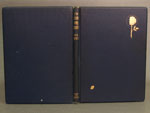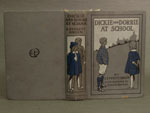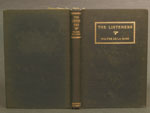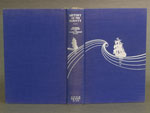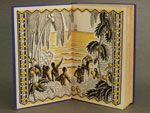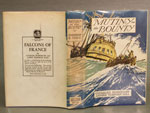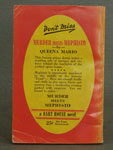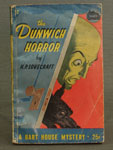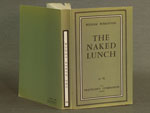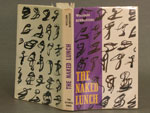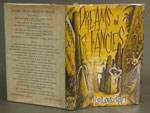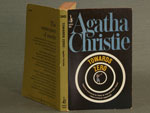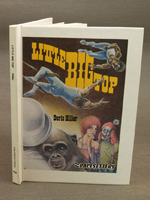20th Century: Bindings for the Masses
Once mechanization was complete and the Industrial Revolution had won, books could be produced by the thousands. The 20th century saw refinements, both good and bad, in the machine-made book. Machine sewing became stronger, but adhesive binding slowly has taken over. Machine made paper has definitely gotten better over the last 50 years, but there are many brittle books from the late 19th and early 20th centuries slowly disintegrating. Despite this being the digital age, books seem to be here to stay... at least for the foreseeable future.
- Author:
- Yeats, W. B. (William Butler), 1865-1939.
- Title:
- The shadowy waters.
- Publisher:
- London : Hodder and Stoughton, 1900.
- Call Number:
- PR 5904 .S45 1900
Full cloth binding with gold stamping on spine and cover. Small, restrained graphic on the cover is reminiscent of late 19th century design. Head of texblock is gilded.
- Author:
- Everett-Green, Evelyn, 1856-1932.
- Title:
- Dickie and Dorrie at school / By Evelyn Everett-Green ; illustrated by Gordon Browne.
- Publisher:
- London : Wells Gardner, Darton, 1911.
- Call Number:
- PR 6009 .V475 D5 1911
Full cloth binding with black, white and blue stamping. With mutli-colored stamping on cloth, imagery becomes more complex and detailed.
- Author:
- De la Mare, Walter, 1873-1956.
- Title:
- The listeners, and other poems, by Walter De La Mare.
- Publisher:
- New York, H. Holt and company, 1916.
- Call Number:
- PR 6007 .E3 L5 1916
As the 20th century progressed, decoration slowly moved from the cover to the dust jacket. This full cloth binding with simple gold stamping reflects this new design sentiment.
- Author:
- Nordhoff, Charles, 1887-1947.
- Title:
- Mutiny on the Bounty, by Charles Nordhoff and James Norman Hall.
- Publisher:
- Boston, Little, Brown, and company, 1932.
- Call Number:
- PS 3527 .O437 M8 1932
After World War I, decorated cloth bindings gave way to the printed dust jacket. This book has both. The full cloth binding has title and graphics stamped in silver and white on the spine and front cover as well as a four-color dust jacket. The endpapers are printed with an image, too.
- Author:
- Lovecraft, H. P. (Howard Phillips), 1890-1937.
- Title:
- The Dunwich horror.
- Publisher:
- New York [1945]
- Call Number:
- PS 3523 .O833 D8 1945
Although the paperbound book has been around for centuries (see limp bindings), the paperback as we know it has its start in the late 19th century. It was created as an inexpensive way to get books to the masses. The adhesive-bound form, often called “perfect bound,” was introduced shortly before World War II. This 1945 paperback features a cover graphic meant to attract the consumer’s attention.
- Author:
- Burroughs, William S. 1914-1997.
- Title:
- The naked lunch.
- Publisher:
- Paris, Olympia Press, [1959]
- Call Number:
- PS 3552 .U75 N3 1959
Not all paperback books are adhesive bound. This is an example of a sewn book with unsupported paper covers. The covers are very plain with title and publisher on spine and cover. Not so common, this paper-bound book has a dust jacket.
- Author:
- Lovecraft, H. P. (Howard Phillips), 1890-1937.
- Title:
- Dreams and fancies.
- Publisher:
- Sauk City, Wis., Arkham House, 1962.
- Call Number:
- PS 3523 .O833 D7 [1962]
A typical modern hard cover binding. The full cloth binding has the title stamped on the spine with no other cover decoration. The dust jacket is meant to compel the reader to purchase this book. Unlike many of today’s hard cover books, the pages in this book are sewn with thread rather than held together with glue as is the practice today.
- Author:
- Christie, Agatha, 1890-1976.
- Title:
- Towards zero.
- Publisher:
- New York : Pocket Books, [1967, c1944].
- Call Number:
- PR 6005 .H66 T6 1967
- Author:
- Hiller, Doris.
- Title:
- Little Big Top.
- Publisher:
- Chicago : Children's Press, c1979.
- Call Number:
- PS 3558 .I446 L5 1979

